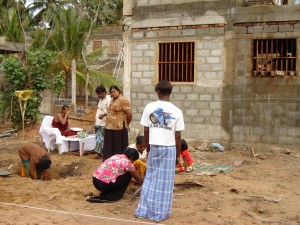Many of us, in making major life decisions, experience both a pull from one direction and a push from another. We may feel conflicted, or we may feel that circumstances have combined to make the decision easy. I don’t know how much Frederick Steiner, the dean of the School of Architecture at the University of Texas, felt pulled or pushed, but he is leaving Austin for his alma mater, a school that awarded him three degrees, the University of Pennsylvania. Steiner, known to friends as “Fritz,” certainly has reason to feel good about returning to his home state after many years elsewhere. As part of full disclosure for this article, I will state also that I have known him for more than a quarter-century as a fellow planning professional for whom I have high respect, and regard him as a friend. Steiner will take his new position as dean of the School of Design in Philadelphia as of July 1. His statement of resignation drew considerable attention from the press.
I also know that political events in Texas have conspired to drive him into the arms of his alma mater. Fritz does not like the new law in Texas, passed last year, which as of August 1 will allow individuals to carry a concealed firearm on a state university campus, including inside buildings, with some exceptions. He has said so in announcing his resignation, but I also interviewed him by telephone yesterday in order to gain more insight into his perspective on the matter.
The very first fact that Fritz pointed out to me was that the new law takes effect on the 50th anniversary of the Whitman tower shootings at the Austin campus. On August 1, 1966, Charles Whitman, a former Marine who, it turned out, was suffering from a brain tumor, climbed the University of Texas tower with a toolbox full of weapons and began shooting innocent victims with a rifle, killing 16 and injuring 30. Ultimately, police officers stormed the tower and ended up killing Whitman in order to stop the shooting. That irony makes one wonder if the Texas legislature and governor are truly oblivious to such perverse symbolism or just did not care. Fritz pointed out that the university’s police department opposed the new law and remains opposed.
In any event, it is important to know that Steiner is not really an anti-gun activist; he feels guns have a place, but it is not just any place and that place is certainly not a public university. “I grew up around guns used for hunting,” he told me. “I was a Boy Scout. In summer camp, we had a live shooting range. That experience taught me to respect guns and know they had an appropriate place. Safety was not to be taken lightly. But I respect people who hunt.”
What Steiner wanted to make clear in his resignation, however, was that “a college campus has no place for guns except for first responders and law enforcement.” His explanation is worth considering. He oversees a program in which students work on architecture and planning studio projects. Their hard work can be stressful, and some projects do not succeed. Critiquing such projects can be tense and emotional for students and faculty alike, Steiner notes, adding that “defending your dissertation or taking an exam can be stressful. The prospect of someone carrying a weapon in such situations is troubling. Do faculty members censor themselves if they know someone has a weapon?”
Such implicit infringement on the First Amendment rights of faculty and staff to speak freely to each other raises a larger set of questions in his mind. Gun advocates, he says, “ignore the part of the Second Amendment about a well-regulated militia,” which ought to indicate that the right to bear arms is not without limitations. In fact, says Steiner, it is wrong to read any part of the Bill of Rights in isolation from all the other rights embodied therein because they all affect each other. “In the Ninth Amendment, you can’t use any amendment to disparage the rights of others,” he notes. “The Tenth Amendment, which planners know well, makes clear that states can legislate for the public health, safety, and welfare.” In short, there is an intended balance among all these rights that “makes it more puzzling why we are implementing this notion of allowing concealed carry on campus.” I would add similar observations, for example, with regard to the First Amendment. Despite its clear language about not impeding freedom of religion, that freedom has never been interpreted as so limitless as to authorize polygamy, nor has the freedom of speech been interpreted to allow one, in the classic example from Justice Oliver Wendell Holmes, to “shout ‘fire’ in a crowded theater.” Every right is bounded by concerns about the greater well-being of the public. So why should we entertain an absolutist interpretation as applied to the Second Amendment?
I want to make clear that Fritz Steiner’s concern about the concealed carry law is not unique within the academic community in Texas. UT Chancellor Bill McRaven, a former Navy SEAL involved in the operation that took out Osama Bin Laden, opposed the new law in a letter to the Texas legislature early last year, stating that the contemplated approach would do nothing to make college campuses in Texas safer, and in fact makes matters worse. McRaven is clearly neither unfamiliar with guns nor opposed to their responsible use. But he is concerned about the safety of his students. Moreover, faculty and student assemblies have expressed their own concerns. Steiner notes that the architecture faculty voted unanimously to express concern about the new law (although one person who was absent might have dissented). What makes it all more curious is that the law allows private universities to exempt themselves from its application, “even though they receive public subsidies.” Steiner questioned why, if this is such a good idea, it would apply only to state university campuses.
In the end, however, he wants to be honest about his own motivations. Both push and pull are at work here, and he found the prospect of returning to Pennsylvania “extremely attractive.” And, over the past two decades, state funding of public universities in the affluent state of Texas has declined from 50 percent to just 13 percent of their overall budgets while “lots of unfunded mandates” have taken effect. On balance, he ultimately decided it was time to go home.
Blogger’s note: Those following “Home of the Brave” have surely noticed that I am finally writing again after a hiatus of nearly three weeks. I suffer from the same limitations as other human beings, which include getting sick. The last week of January brought on a case of acute bronchitis, which took its own toll on my energy level, but I got prescriptions and began to mend, only to succumb to a gastrointestinal virus the following week that kept me at bay for several days. It stands to reason that I got well behind on the work associated with managing the APA Hazards Planning Center, where, among other things, I was busy hiring a new member of our research staff. By the time I recovered, I was on my way to Charleston, South Carolina, where I presented a new project at the NOAA Social Coast Forum. That following weekend, I mustered my last blog post before this, but I have spent most of my spare time since then catching up on the work associated with the Center’s expanding portfolio. This blog is a sideline venture for me, and it suffered from my exhaustion since mid-February. It should fare much better in coming weeks.
All that said, upon my return from Charleston, I received wonderful news that bucked my spirits after such prolonged illness. I was informed that I had been elected to the College of Fellows of the American Institute of Certified Planners, a development also noted on the home page of this website. FAICP status is a high honor in the planning profession, in fact a recognition of lifetime achievement, as explained in more detail by a notice on the University of Iowa’s School of Urban and Regional Planning (SURP) website. SURP has bragging rights because I am both an alumnus of their program and adjunct faculty. The induction ceremony is April 3 in Phoenix, where I will join 60 others in this year’s biennial class. I want to make clear that FAICP status bestows not only honor but obligation—to continue to help serve and advance the profession, something I already feel I am doing by teaching in Iowa City and by discussing public planning issues on this blog. I intend to sustain that obligation.
Jim Schwab


